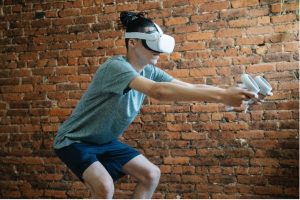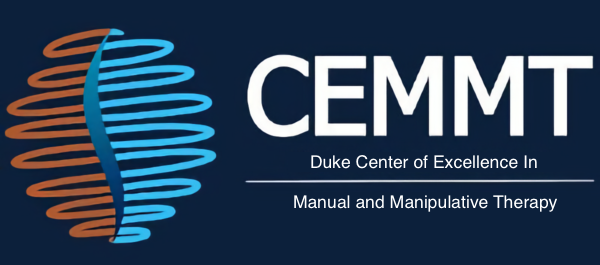Dr Kesava Kovanur Sampath, PhD, M.Ost, BPT
Learners of manual therapy (MT) are required to develop complex hands-on clinical skills underpinned by clinical reasoning, manual/physical assessments and palpation [1]. While much of focus in MT has been either on its effectiveness and/or mechanisms, not much attention has been given to how MT is being taught. Hence, it may be timely to think how to best teach MT as it is more than just techniques.
Dr Kesava Kovanur Sampath, PhD, M.Ost, BPT
Twitter @kesavasampath
Senior Academic Staff Member (Physiotherapy Program), Centre for Health and Social Practice, Waikato Institute of Technology, Hamilton, New Zealand.
Competing interests: part of the Leadership Group, Center of Excellence in Manual and Manipulative Therapy at Duke University.
Manual Therapy – Current Teaching Paradigm
The current approach for teaching the complex skills of MT is based on the “see one, do one, teach one” paradigm. This traditional way of teaching MT has not changed for decades if not centuries. The underlying assumption is that learners can learn and develop skills after observing an expert clinician/teacher, similar to an apprenticeship [2]. We are familiar with the following either as a learner and/or an educator: (1) A demonstration room set up nicely and safely; (2) Educator/tutor introduces/discusses the anatomical region of interest (e.g lumbar spine) including biomechanical and clinical implications/reasoning; (3) Tutor invites a student volunteer to be a model, introduces the technique/assessment (breaks it down to little steps); (4) Tutor demonstrates the assessment technique and/or treatment techniques including mobilization, manipulation, soft-tissue, etc; (5) Students then pair up (or work in groups) and sincerely try and reproduce what was demonstrated; and (6) tutor goes around, check the learner’s techniques, correct posture/provide feedback.

Tradition teaching in MT (photo credit: https://creativecommons.org/licenses/by-sa/3.0/de/deed.en>)
From the above description, it is not hard to imagine that this approach is ‘teacher centred’ and requires an expert teacher/clinician who has effective teaching skills, capable of engaging learners for long periods of time and respected by students. Such experts have a critical influence on learner’s academic success, professional and personal development [3]. Further, the face-to-face teaching and human interaction (hallmarks of this approach) are considered crucial for learner’s success [4].
So what now?
One may ask: “what is wrong with this approach”? Well, nothing is wrong per se, but the current COVID19 pandemic had made face-to-face sessions impossible for some periods (lasting to months), let alone hands-on sessions (try demonstrating a C3 manip via zoom). Perhaps, for the first time, most manual therapy educators missed the two essential components (face-to-face teaching and human interaction) of the ‘see one do one’ approach. Other challenges during the pandemic interruption included cost (both institutions and learners had to buy expensive software/hardware and devices); time challenges (the sessions were shortened as learners may not have practice partners); lack of exposure (the learners did not have opportunity to get exposed to other tutors/clinicians); zoom fatigue (exhaustion for both learners and educators due to the constant demand of technology). On the other hand, however, this also provides an opportunity to critically look/reflect at the ‘see one do one’ approach that we currently use to teach MT.
As noted above, the current paradigm of teaching MT is ‘teacher centred’, which may not produce self-directed learners as it neither facilitate nor empower a learner’s autonomous study-skills or critical inquiry that can occur at any stage of the learning process. The assessments are often teacher led and mostly carried out as summative evaluation with less opportunities for formative feedback that address qualitative issues of the learner’s progress [5]. Lack of opportunity to practice may also be a limitation of current way MT is being taught. Often, it is up to the learners to organize sessions (outside of class time) to practice MT assessment/treatment techniques that was demonstrated in the classroom. As repetition/practice is key for development of hands-on skills, a lack of practice can adversely influence student outcomes [6]. A rather serious criticism of the ‘see one, do one’ approach has been around preparing learners that can maintain patient safety standards. However, evidence indicate that between 28% and 42% of medical residents felt inadequately trained to safely perform a medical procedure alone for the first time, which could be attributed to the traditional (see one do one) teaching methods [7]. Extrapolating these findings, it could be argued that MT students could feel inadequately trained to be ready for real life practice.
Role of Technology:
In contrast, a learner centred approach advocates for advanced communicative and cross-cultural skills, problem-solving and meta-cognitive skills as well as lifelong learning skills. Therefore, alternative teaching approaches utilizing technology such as simulation, virtual reality (VR), augmented reality (AR) to name a few have been used in medical education. A meta-analysis compared the effectiveness of traditional (see one do one) methods of clinical medical education versus simulation based medical education (SBME) with deliberate practice (DP). The findings from the study clearly demonstrated that SBME with DP enhanced the acquisition of specific clinical skills compared to traditional teaching [8]. These findings are similar to the findings of a randomised controlled trial [9] results that compared ‘best practice’ model (structured feedback, practice on manikins and Peyton’s ‘four step’ approach) with the traditional ‘see one do one’ approach. The RCT showed that the ‘best approach’ model resulted in improved student performance over a long-term.

Is VR a potential tool in MT education? (Photo credit: https://www.pexels.com)
Haptics – the real deal:
Despite the above evidence, the hands-on nature of MT may mean that any futuristic technology (e.g. VR) must provide some form of haptic feedback (sense of touch) to the user. For example, some VR systems such as the Geomagic or the Phantom Omni have in-built haptic system that creates more realistic scenarios for trainees to develop their skill [10]. Additional features may enable the user to grasp virtual objects, “sensor” hands that interact with the skin surface and provide varying degrees of freedom of movement [3, 11]. Taken together, it could be argued that technologies such as VR with haptic feedback may enhance assessment technique and/or treatment techniques used in MT (e.g., mobilization, manipulation, etc). A recent scoping review (under review) undertaken by our team however found that there are no AR, VR or mixed applications that specifically serve the needs of MT education in relation to joint motion assessment, but applications are available that can be readily used or potentially adapted to train skills of tissue palpation. We have also undertaken two qualitative studies to investigate the attitudes, beliefs and perception of educators and students for using VR as part of MT education. The preliminary results indicate that technology such as VR may complement the traditional ‘see on do one’ approach but cannot replace face-to-face teaching completely. Nevertheless, such technologies could play an important role where face-to-face teaching may not be possible (e.g., COVID pandemic).
Author bio(s): Dr Kesava Kovanur Sampath is a Senior Academic Staff Member at WINTEC, Aotearoa/New Zealand. He has dual training and is a New Zealand board-certified physiotherapist and osteopath. A clinical researcher and educator, Kesava’s research investigates three key areas of manual therapy: (1) neurophysiology (mechanisms underpinning MT); (2) Implementation (BPS model in practice); and (3) MT education (role for technology). He is a visiting research fellow at the University of Technology, Sydney. He has 19 published manuscripts since 2015 and has presented his research at various national/international conferences. Kesava is also an International Advisory Board Member for the International Journal of Osteopathic Medicine.
References
[1] Michels MEJ, Evans DE, Blok GA. What is a clinical skill? Searching for order in chaos through a modified Delphi process. Medical Teacher. 2012;34(8):e573-e81. DOI: http://dx.doi.org/10.3109/0142159x.2012.669218.
[2] Kotsis SV, Chung KC. Application of the “see one, do one, teach one” concept in surgical training. Plastic and Reconstructive Surgery. 2013;131(5):1194-201. DOI: http://dx.doi.org/10.1097/PRS.0b013e318287a0b3.
[3] Pacchierotti C, Chinello F, Malvezzi M, Meli L, Prattichizzo D, editors. Two Finger Grasping Simulation with Cutaneous and Kinesthetic Force Feedback2012; Berlin, Heidelberg: Springer Berlin Heidelberg.
[4] Youde A. “Face-to-Face Trumps Everything”: An Exploration of Tutor Perceptions, Beliefs and Practice Within Blended Learning Environments. Education Sciences. 2020;10(5):147.
[5] Rodriguez-Paz JM, Kennedy M, Salas E, Wu AW, Sexton JB, Hunt EA, et al. Beyond “see one, do one, teach one”: toward a different training paradigm. Quality and Safety in Health Care. 2009;18(1):63-8. DOI: http://dx.doi.org/10.1136/qshc.2007.023903.
[6] Duvivier RJ, van Dalen J, Muijtjens AM, Moulaert VRMP, van der Vleuten CPM, Scherpbier AJJA. The role of deliberate practice in the acquisition of clinical skills. BMC Medical Education. 2011;11(1):101. DOI: http://dx.doi.org/10.1186/1472-6920-11-101.
[7] Smith CC, Gordon CE, Feller-Kopman D, Huang GC, Weingart SN, Davis RB, et al. Creation of an innovative inpatient medical procedure service and a method to evaluate house staff competency. Journal of General Internal Medicine. 2004;19(5 Pt 2):510-3. DOI: http://dx.doi.org/10.1111/j.1525-1497.2004.30161.x.
[8] McGaghie WC, Issenberg SB, Cohen ER, Barsuk JH, Wayne DB. Does simulation-based medical education with deliberate practice yield better results than traditional clinical education? A meta-analytic comparative review of the evidence. Academic Medicine. 2011;86(6):706-11. DOI: http://dx.doi.org/10.1097/ACM.0b013e318217e119.
[9] Herrmann-Werner A, Nikendei C, Keifenheim K, Bosse HM, Lund F, Wagner R, et al. “Best practice” skills lab training vs. a “see one, do one” approach in undergraduate medical education: an RCT on students’ long-term ability to perform procedural clinical skills. PLoS One. 2013;8(9):e76354. DOI: 10.1371/journal.pone.0076354.
[10] Kirkman MA, Ahmed M, Albert AF, Wilson MH, Nandi D, Sevdalis N. The use of simulation in neurosurgical education and training. Journal of Neurosurgery 2014;121(2):228. DOI: http://dx.doi.org/10.3171/2014.5.Jns131766.
[11] Monroy M, Oyarzabal M, Ferre M, Campos A, Barrio J, editors. MasterFinger: Multi-finger Haptic Interface for Collaborative Environments2008; Berlin, Heidelberg: Springer Berlin Heidelberg.

About the article, here are a few thoughts from an old Luddite….
“Whats wrong with the current model? Nothing per se….”
I don’t quite agree. I have always thought it very “unsafe”, as, as far as I know, MT students do not under go a through medical screening- no spinal xrays. Students may have unknown spinal “injuries” from previous sports or accidents, or maybe congenital…..
Also manipulations are being “performed” by students on students…one half who do not know/are learning what they are doing and the other half do not “need” those manipulations.
I do not fully agree that there is a lack of practice time, students should be practicing in their own time….but there is certainly a great lack of supervised practice time.
SBME I would think is great for studying solid, definitive, inline structures. I am not certain how good it would be for manipulations as this is a very global/holistic activity…can it replicate input/patient response in real time?
Yes, AR/VR with realistic haptics would be ideal ( it would sort out my first comments), but this would have to be augmented by face to face time to discuss and learn the nuances of a technique eg. how to relax the patient, alternative hand holds, communication.
There you go my friend, my thought s for what they are worth.
Thanks for your valuable feedback Marcus. Agree and appreciate your thoughts.